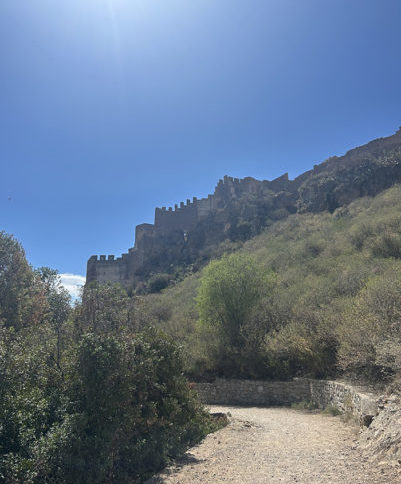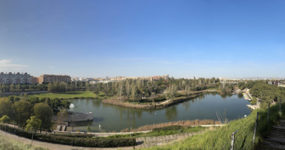Located approximately 19 miles north of Valencia, Sagunto is a Roman city rich in history and culture. Easily accessible by bus and train, the historic town offers many places of interest and is a perfect day trip from Valencia. By car, it is about a 30 minute drive from the city of Valencia to Sagunto.
The historic centre begins in Placa Major, once the commercial and cultural centre of Medieval life in Sagunto, and now a central point to start your exploration of Sagunto’s history. The grandiose Santa Maria Church immediately grabs the attention of visitors, looming proudly over the square. Dating from the 14th century, the church was built on the site of the old main mosque and encapsulates the Valencian gothic pointed arch style.
Not quite as large as the Santa Maria Church, but just as architecturally intriguing, is the Ermita de la Sang. It’s the oldest baroque temple of Camp de Morvedre, and is built in the shape of a Latin cross. Discover more about the history and culture of the city at the nearby Casa dels Berenguer, an information centre situated within a converted gothic palace, or the Museo Arqueológico de Sagunto which holds Iberian and Roman artefacts from the region.
Just a short walk from the main square is the Jewish quarter, its urban topography essentially the same as it was in the 13th century. The original access point to the quarter is still intact, through the Portal de la Juderia, also known as the Portalet de la Sang (portal of blood). Rumoured to have existed since the 1st century, this was the main Jewish quarter of the kingdom of Valencia until 1492 when Jews were expelled from the Iberian Peninsula.
After a winding uphill ascent from the historic centre, the Roman Amphitheatre and Castle can be reached. Both free to enter, they hold an abundance of history. The Roman Amphitheatre was the first archaeological site in Spain to be declared as a national monument in 1896. The site underwent partial architectural renovation in the 1990s after being neglected, however the Roman remains are still very apparent and there is a perfect balance between functionality and history. Due to the ampitheatre’s renovation and functionality, Sagunt a Escena theatre festival is held in the town every July and August and is the most important theatrical event in the region of Valencia.
The castle fortress includes Iberian, Roman and medieval remains and dates back over two thousand years. The first settlers were the Iberians during the early Iron Age, followed by the Romans in 2nd Century BC. Indeed, the legendary Carthaginian general Hannibal attacked Sagunto and eventually conquered it, which led to the second Punic War.
The castle was then submitted to the sultan Abd-ar-Rahman III in 933 AD to be used to defend what was then Al-Andalus. The interior of the castle is divided into seven enclosures, with the Plaza de Armas being the best preserved and most important.
For those that enjoy nature, a wonderful hiking trail wraps around the castle with signposted historical information and interesting archaeological landmarks along the way. Most notably, the remains of a defensive structure built during the Spanish Civil War, used by the Republican side to fight Franco’s troops during the battle of Levante in 1938.
Undertaking the hike provides panoramic views of the town of Sagunto, the Mediterranean Sea and the surrounding plains. This view illustrates the historical strategic importance of Sagunto as a watchtower, and why many different cultures have occupied the territory throughout history.
Report By Polly Watton
Article copyright ’24/7 Valencia’
Sagunto photos copyright Polly Watton/ 24/7 Valencia
Related Post
This site uses Akismet to reduce spam. Learn how your comment data is processed.

























Leave a comment